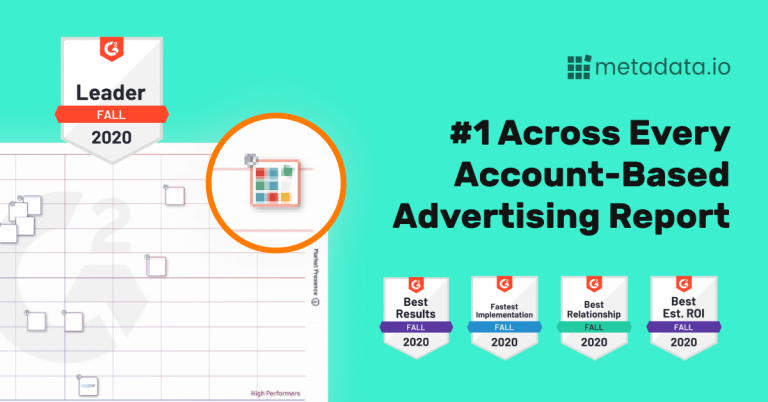Look Beyond the MQL: 3 Steps to Introduce Revenue Marketing to Your Company
The demand generation tactics of yesteryear are no longer enough, especially if you’re strapped for resources and leadership is asking you to drive more pipeline.
You can’t do that if you’re solely focused on MQLs.
According to Kim Roman, Senior Director of Global Campaigns and Programs at Okta, “Content is king, data is queen, and revenue is the royal family. Revenue is the lifeblood of every company…without it, there are no resources to do the jobs we love, including creating content, collecting data, and everything else we need to do to keep the kingdom running.”
So, what’s the opposite of tracking MQLs and holding on to demand gen tactics of the past? Introducing your company to revenue marketing.
What’s revenue marketing?
Kim answered this question by sharing what it’s not during her session at DEMAND 2023: “[With traditional tactics], there’s a heavy focus on activities aimed at generating new pipeline, and most often, everything stops there. Budget allocation, resources, and measurement all seem to stop at opportunity creation, if not even sooner, with some Marketing teams stopping at the MQL.”
Conversely, revenue marketing focuses on the customer journey and long-term goals such as retention, customer lifetime value (CLTV), and expansion. Sales and Marketing teams work together to make decisions about budget, channels, and messaging—not just leads.

3 steps to bring a revenue marketing approach to your company
A mindset shift of this magnitude certainly won’t happen overnight. After all, you’ve used traditional lead generation tactics as the foundation of your strategy for years, so moving away from them—and convincing your company this is a smart play—will take time.
That said, there are steps you can take to slowly introduce this new mindset to your company, and it starts by getting on the same page with your Sales team.
1. Break down silos with Sales and find a shared vision
Historically, Sales and Marketing teams have mixed just about as well as oil and water, but things are changing.
40% of Sales professionals say that Sales and Marketing teams have become more aligned as of late; they’re waking up to the deal-closing benefits. Case in point: 87% of Sales and Marketing leaders say that collaboration between their teams enables critical business growth.
But we’re not just talking about scheduling weekly meetings with Sales, sharing a dashboard, or attending quarterly business review (QBRs). Revenue marketing is so much more than that.
Kim said, “[Revenue marketing] is more than just having a good relationship with your Sales team. It’s about having one shared vision between the two teams and aligning on the same expectations and metrics, so everyone’s on the same page.”
Obviously, that’s easier said than done, so here’s a trick: Start the conversation with a blank slate by throwing away any biases you have about your marketing strategy—and ask your Sales team to do the same.
Then, pose these questions to both teams:
- How do you measure success?
- What’s your system of record?
- Where’s your focus?
Then, compare answers. They’ll be different—and that’s ok. Your goal is to find common ground. Once you do, keep the conversation going. Goals change. Teams adopt new technology. As a result, expect the answers to these questions to change often. You can only do that if you obsessively communicate with Sales.
The graphic below from Kim’s DEMAND session, Moving from Demand Generation to Revenue Marketing: 3 Critical Steps, illustrates how Sales and Marketing teams can come together to agree on a shared vision and bring revenue marketing to life.

2. Understand your customers and *actually* personalize their experience
We know you already support your customers—maybe by thinking about their pain points and aligning your message with them—but are you truly supporting them across their entire journey from prospect to power user? You may not be.
Remember: Revenue marketing doesn’t stop at lead and opportunity creation—it requires you to think about every touch point after that, too.
How can you do that?
Start by diving into your customers’ minds. What’s your product helping them solve? There likely won’t be one answer, but notes from your Sales team and CRM data will help you pinpoint patterns. Kim suggests focusing on the top pain points or challenges, which will “help to take some of that guesswork out of what’s actually going to resonate [from a paid advertising standpoint].”
From there, you can personalize their experience. For example, you could:
- Have your chatbot recognize customers when they land on your website
- Tailor your ad copy and creative your customers’ immediate needs
- Launch campaigns across the most relevant channels, including LinkedIn, Facebook, and Google Search
You can take it a step further by using your CRM data to create laser-focused audiences that maximize your budget, build pipeline, and increase customer lifetime value (LTV) via upsell and cross-sell opportunities.
Pro Tip: Create targeted audiences with your best-fit customers in mind (aka the ones who close the fastest, have the greatest lifetime value, and renew early). To do this, create a report in Salesforce or HubSpot with recent closed-won deals and pull those customers. Then, create an audience in the native tools or Metadata and deliver campaigns across channels to those highest-intent groups.
Quick aside: Here’s how to build a complete customer journey
To build an accurate customer journey, start with what you know about your customers’ pain points, challenges, and key events in their journey, like the frequent actions they take before requesting a demo. Then, once you start creating demand, note how your customers are engaging with your ads, which channels are getting the most clicks, and the messages that resonate the most.
As your campaigns run (give them a few months), your audience will “tell you” what they like and don’t. It’s your job to pay attention, pick up on those signals, and optimize your campaigns accordingly. Or you can just have Metadata do it for you.
One more thing: Your customers’ journeys will change over time, so don’t go into this exercise with the expectation that you’re etching something in stone. In reality, you should do this at least once a year.

3. Measure metrics far beyond the MQL
Have you ever wondered how Forrester feels about MQLs? We think it’s safe to say they’re not the biggest fan.

Kim isn’t the biggest fan, either, but not quite to the same extent. She said, “It’s not to say that we shouldn’t track MQLs, but that the metric is no longer the be-all-end-all of marketing performance. You and your team should focus on new metrics such as marketing-sourced pipeline and opportunities, CLTV, and ROI.”
If you asked us what we think of MQLs, we’d say they’re too far removed from revenue, meaning you’ll never be able to use them to accurately show your boss how your paid campaigns are impacting your company’s bottom line.
So, what should you do instead of tracking MQLs? Agree on an attribution model and start looking at the metrics that really matter.
Although there’s no perfect attribution model, here are the most common variations:
- First touch or click
- Last touch or click
- Linear
- Position-based or U-shaped
- W-shaped
- Time decay
- Multi-touch
Once you land on your attribution model, you can start making decisions based on the entire funnel—not just leads—and optimize accordingly (or, again, have Metadata do it for you).
Kim hits the nail on the head toward the end of her DEMAND session: “Being able to confidently explain your strategy because it’s backed by where you’re seeing wins and generating revenue is truly priceless.”
Become data-driven with this end-to-end scorecard
The proof is in the pudding, or in this case, in the end-to-end scorecard. To introduce a revenue marketing approach at your company—and keep it in place for the long term—you need a central hub that Sales and Marketing teams can rely on to understand how their efforts are impacting revenue.
“A comprehensive scorecard will increase visibility, communication, and transparency across your entire organization and allow leaders from both Marketing and Sales to identify gaps or hotspots that might have a downstream impact,” Kim shared.

She continued, “Having all of these metrics as part of your scorecard means that everyone is more prepared to have meaningful discussions with other teams.” These conversations are essential to evolving your revenue marketing strategy in the best interest of your company and customers.
Want to learn more about Metadata? Book a demo today.
Want to hear more smart marketers like Kim share their genius? Watch more DEMAND sessions.




